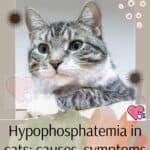
Blastomycosis in cats: a rare disease that can mainly affect felines that come from abroad or travel a lot. Let’s see the symptoms and treatment of this pathology.
Our pets are often exposed to bacteria that can cause diseases, sometimes even serious ones. To prevent this from happening, we should first of all pay attention to where our furry friends go and be able to recognize any symptoms.
Today we will see together what are the signs to observe in our cat in the event that the latter has contracted blastomycosis and what is the treatment of this pathology.
Cat blastomycosis: cause and symptoms
The blastomycosis is not contagious fungal infection that can affect dogs, however, men and even cats.
The cause of this pathology is the presence of a bacterium, Blastomyces Dermatitidis. This fungus can be found in swamps, lakes, damp soils, especially where there is little sunlight, and in rotten wood.
The cat can contract this disease by inhaling the spores of the fungus. In fact, this bacterium mainly affects the lungs of our furry friend and then spreads throughout the body, causing not only respiratory problems but also skin, bone, eye problems and even problems with the cat’s nervous system.
The main symptoms of blastomycosis in cats are the following:
- Lethargy
- Skin lesions;
- Detachment of the retina;
- Eye problems;
- Loss of appetite in the cat ;
- Slimming;
- Limp cat ;
- Fever in cats ;
- Respiratory difficulties;
- Pneumonia.
Being symptoms that can also be associated with other pathologies, it is necessary to contact a veterinarian immediately, as if not treated in time, blastomycosis could lead to the death of the feline.
Blastomycosis in cats: diagnosis and treatment

The vet can hardly diagnose blastomycosis in cats by referring only to the symptoms, as the latter are very common.
For this reason the specialist needs to carry out certain tests:
- Complete blood test;
- Urinalysis;
- Examinations of injured tissues;
- Chest X-ray.
It is also important to tell the specialist if your cat is allowed to go outside.
Once the pathology has been diagnosed, the vet will prescribe antifungal drugs to the cat, the only therapy to eliminate the bacteria in the body.
This drug could also be administered to the cat for a long period of time, for this reason it is necessary that the feline be monitored by the veterinarian as it could have liver or kidney damage.
The cat’s recovery from blastomycosis depends solely on the severity of the symptoms. In the event that the cat has severe respiratory infections even after starting treatment, it is unfortunately likely that the feline will never recover.






